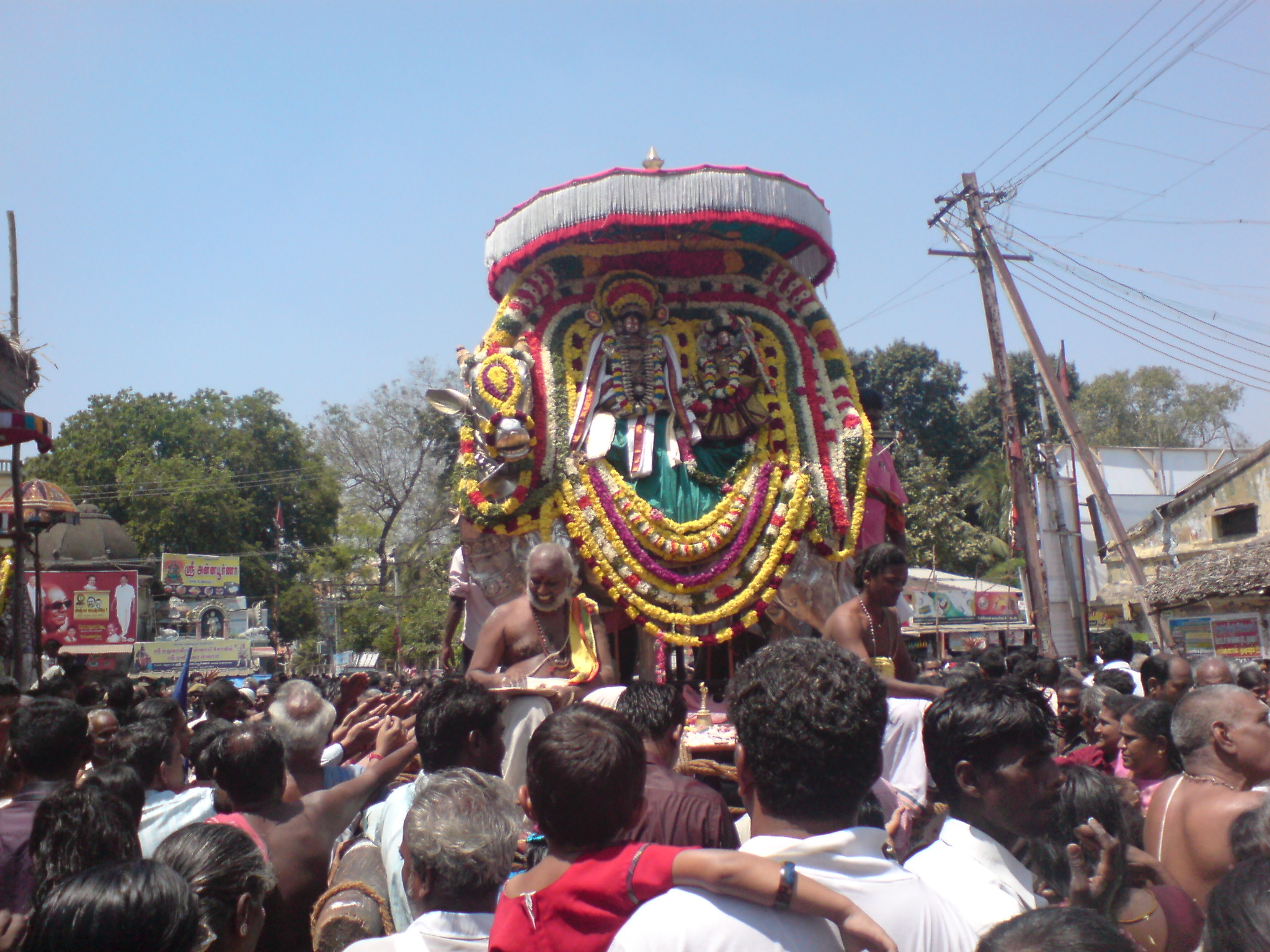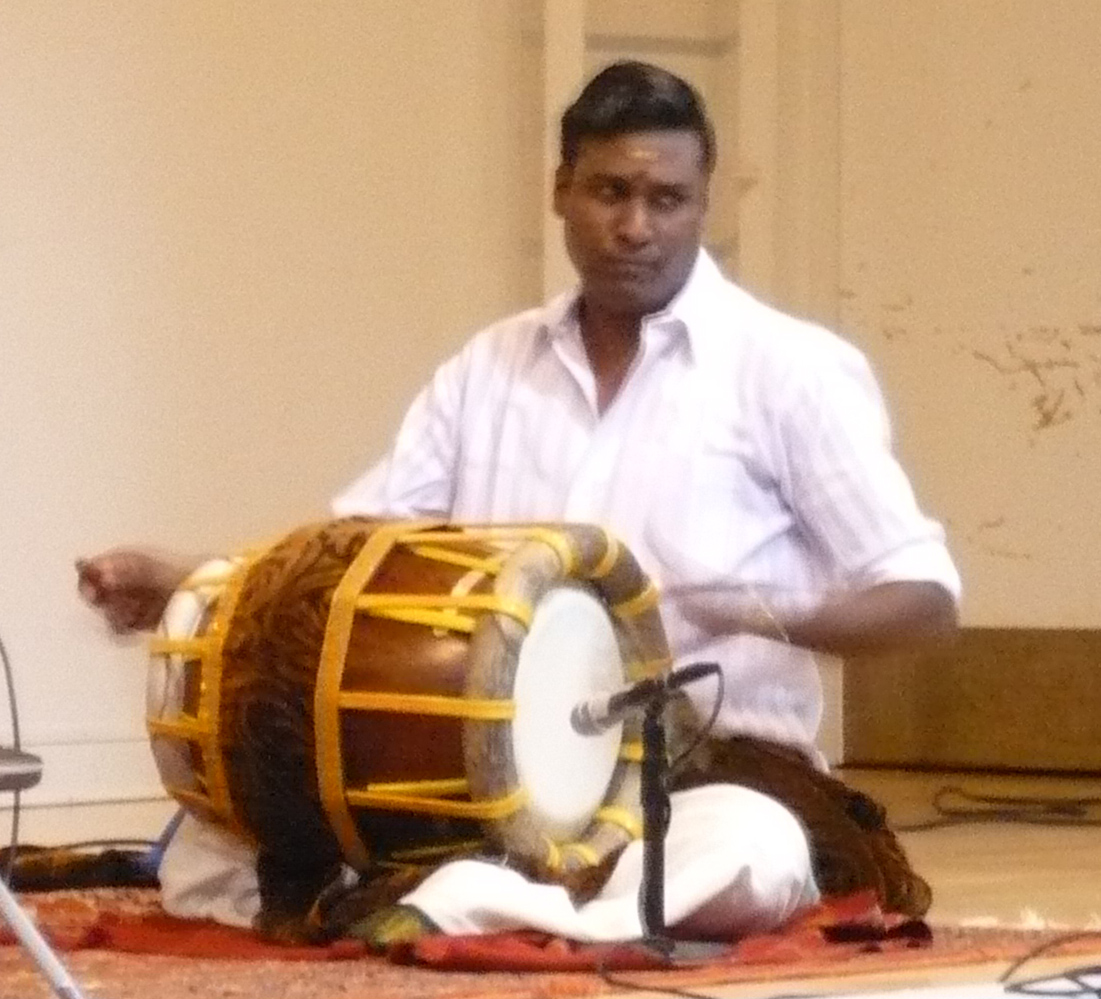|
Paraithurainathar Temple
Paraithurainathar Temple is a Hindu temple in the town of Thirupparaithurai, Karur district of Tamil Nadu, India. The presiding deity Paraithurainathar is revered in ''Tevaram'', written by Tamil saint poets known as the nayanmars and classified as ''Paadal Petra Sthalam''. The temple gives its name to the village of Thirupparaithurai. The temple is famed for the legend of Shiva teaching lesson to hermits. The temple is a part of the series of temples built by Cholas along the banks of river Kaveri. It has several inscriptions dating back to the Chola period. The temple has six daily rituals at various times from 6:00 a.m. to 8 p.m., and many yearly festivals on its calendar. The annual ''Brahmotsavam'' (prime festival) during Vaikasi (May–June) and Aippasi Thulastam are the major festivals of the temple. The temple is maintained and administered by the Hindu Religious and Endowment Board of the Government of Tamil Nadu. Legend As per Hindu legend, the hermits in Thar ... [...More Info...] [...Related Items...] OR: [Wikipedia] [Google] [Baidu] |
Tamil Nadu
Tamil Nadu (; , TN) is a States and union territories of India, state in southern India. It is the List of states and union territories of India by area, tenth largest Indian state by area and the List of states and union territories of India by population, sixth largest by population. Its capital and largest city is Chennai. Tamil Nadu is the home of the Tamil people, whose Tamil language—one of the longest surviving Classical languages of India, classical languages in the world—is widely spoken in the state and serves as its official language. The state lies in the southernmost part of the Indian peninsula, and is bordered by the Indian union territory of Puducherry (union territory), Puducherry and the states of Kerala, Karnataka, and Andhra Pradesh, as well as an international maritime border with Sri Lanka. It is bounded by the Western Ghats in the west, the Eastern Ghats in the north, the Bay of Bengal in the east, the Gulf of Mannar and Palk Strait to the south-eas ... [...More Info...] [...Related Items...] OR: [Wikipedia] [Google] [Baidu] |
Trichy
Tiruchirappalli () ( formerly Trichinopoly in English), also called Tiruchi or Trichy, is a major tier II city in the Indian state of Tamil Nadu and the administrative headquarters of Tiruchirappalli district. The city is credited with being the best livable city and the cleanest city of Tamil Nadu, as well as the fifth safest city for women in India. It is the fourth largest city as well as the fourth largest urban agglomeration in the state. Located south of Chennai and north of Kanyakumari, Tiruchirappalli sits almost at the geographic centre of Tamil Nadu state. The Cauvery Delta begins west of the city where the Kaveri river splits into two, forming the island of Srirangam which is now incorporated into the Tiruchirappalli City Municipal Corporation. The city occupies an area of and had a population of 916,857 in 2011. Tiruchirappalli's recorded history begins in the 3rd century BC, when it was under the rule of the Cholas. The city has also been ruled by the Pall ... [...More Info...] [...Related Items...] OR: [Wikipedia] [Google] [Baidu] |
Pradosha
Pradosha or Pradosham (IAST: Pradoṣa) is a bimonthly occasion on the thirteenth day of every fortnight in the Hindu calendar. Aiya V. 1906, p. 103 It is closely connected with the worship of the Hindu god Shiva. The auspicious three-hour period 1.5 hours before and after sunset is considered as the most suited and optimal time for worship of Shiva on this day. The fasting vow performed during the period is called "Pradosha vrata". A devotee should wear rudraksha, Vibhuti and worship Shiva by abhisheka, sandal paste, bael leaves, fragrance, deepa and naivedya (food offerings). Etymology Pradosha is indicative of day names in the calendar. Pradosha was the son of Kalpa and Dosha. He had two brothers, namely Nishita and Vyustha. The three names mean beginning, middle and end of night. The days from every new moon day to every full moon day is called "Shukla Paksha" and the days from every full moon day to new moon day is called "Krishna Paksha". During every month and during ever ... [...More Info...] [...Related Items...] OR: [Wikipedia] [Google] [Baidu] |
Vedas
upright=1.2, The Vedas are ancient Sanskrit texts of Hinduism. Above: A page from the '' Atharvaveda''. The Vedas (, , ) are a large body of religious texts originating in ancient India. Composed in Vedic Sanskrit, the texts constitute the oldest layer of Sanskrit literature and the oldest scriptures of Hinduism. There are four Vedas: the Rigveda, the Yajurveda, the Samaveda and the Atharvaveda. Each Veda has four subdivisions – the Samhitas (mantras and benedictions), the Aranyakas (text on rituals, ceremonies, sacrifices and symbolic-sacrifices), the Brahmanas (commentaries on rituals, ceremonies and sacrifices), and the Upanishads (texts discussing meditation, philosophy and spiritual knowledge).Gavin Flood (1996), ''An Introduction to Hinduism'', Cambridge University Press, , pp. 35–39A Bhattacharya (2006), ''Hindu Dharma: Introduction to Scriptures and Theology'', , pp. 8–14; George M. Williams (2003), Handbook of Hindu Mythology, Oxford University Press, , p ... [...More Info...] [...Related Items...] OR: [Wikipedia] [Google] [Baidu] |
Tavil
A ''thavil'' (Tamil language, Tamil:தவில்) or ''tavil'' is a barrel-shaped percussion instrument from Tamil Nadu. It is also widely used in Andhra Pradesh, Karnataka, Kerala, Tamilnadu and Telangana States of South India. It is used in temple, folk music, folk and Carnatic music, often accompanying the ''nadaswaram''. The ''thavil'' and the ''nadaswaram'' are essential components of traditional festivals and ceremonies in South India. In folk music contexts, a pair of wider, slimmer sticks are sometimes used. Thanjavur is famous for ''thavil'', so called ''Thanjavur Thavil''. In Kollywood Filmi songs thavils are mostly used, Notable movies: "Thillaanaa Mohanambal", "Paruthiveeran", "Karagattakaran", "Sarvam Thaala Mayam". History Thavil is a traditional musical instrument of the ancient city of Thanjavur in Tamil Nadu. It is an integral part of the Carnatic music in Thanjavur. It is mostly made in Thanjavur and Valayapatti. Physical components The ''thavil'' ... [...More Info...] [...Related Items...] OR: [Wikipedia] [Google] [Baidu] |
Nagaswaram
The Nagaswaram (nādḥasvaram) is a double reed wind instrument from South India. It is used as a traditional classical instrument in Tamil Nadu, Andhra Pradesh, Telangana, Karnataka, and Kerala. This instrument is "among the world's loudest non-brass acoustic instruments". It is a wind instrument partially similar to the North Indian ''shehnai,'' but much longer, with a hardwood body, and a large flaring bell made of wood or metal. In South Indian culture, the nadasvaram is considered to be very auspicious, and it is a key musical instrument played in almost all Hindu weddings and temples of the South Indian tradition. It is part of the family of instruments known as ''mangala vadyam'' (lit. ''mangala'' "auspicious", ''vadya'' "instrument"). The instrument is usually played in pairs, and accompanied by a pair of drums called ''thavil''; it can also be accompanied with a drone from a similar oboe, called the ottu. History The nadasvaram is referred to in many ancient Tam ... [...More Info...] [...Related Items...] OR: [Wikipedia] [Google] [Baidu] |
Naivedhya
200px, Prasad thaal offered to Swaminarayan temple in Ahmedabad ">Shri Swaminarayan Mandir, Ahmedabad">Swaminarayan temple in Ahmedabad Prasada (, Sanskrit: प्रसाद, ), Prasadam or Prasad is a religious offering in Hinduism. Most often ''Prasada'' is vegetarian food especially cooked for devotees after praise and thanksgiving to the Lord. Mahaprasada (also called Bhandarā),Pashaura Singh, Louis E. Fenech, 2014The Oxford Handbook of Sikh Studies/ref> is the consecrated food offered to the deity in a Hindu temple which is then distributed and partaken by all the devotees regardless of any orientation.Chitrita Banerji, 2010Eating India: Exploring the Food and Culture of the Land of SpicesSubhakanta Behera, 2002Construction of an identity discourse: Oriya literature and the Jagannath lovers (1866-1936) p140-177.Susan Pattinson, 2011The Final Journey: Complete Hospice Care for the Departing Vaishnavas pp.220. ''Prasada'' is closely linked to the term Naivedya ( sa, न� ... [...More Info...] [...Related Items...] OR: [Wikipedia] [Google] [Baidu] |
Abhisheka
Abhisheka () means "bathing of the divinity to whom worship is offered." It is a religious rite or method of prayer in which a devotee pours a liquid offering on an image or murti of a God or Goddess. Abhisheka is common to Indian religions such as Hinduism, Buddhism and Jainism. Hinduism An abhiṣeka is conducted by priests by bathing the image of the deity being worshipped, amidst the chanting of mantras. Usually, offerings such as milk, yogurt, ghee, honey, panchamrita, sesame oil, rose water, sandalwood paste may be poured among other offerings depending on the type of abhishekam being performed. This rite is routinely performed in Hindu temples. A '' Rudrābhiṣeka'' or abhiṣeka of Rudra is performed on lingams. A Kumbhabhishekam is a consecration ritual for a Hindu temple. Buddhism Vajrayana Buddhism In Vajrayana Buddhism or Mantrayana Buddhism, one enters into the path of Vajrayana Buddhism by receiving the four stages of tantric empowerments, or abhisheka: the ... [...More Info...] [...Related Items...] OR: [Wikipedia] [Google] [Baidu] |
Shaiva
Shaivism (; sa, शैवसम्प्रदायः, Śaivasampradāyaḥ) is one of the major Hindu traditions, which worships Shiva as the Supreme Being. One of the largest Hindu denominations, it incorporates many sub-traditions ranging from devotional dualistic theism such as Shaiva Siddhanta to yoga-orientated monistic non-theism such as Kashmiri Shaivism.Ganesh Tagare (2002), The Pratyabhijñā Philosophy, Motilal Banarsidass, , pages 16–19 It considers both the Vedas and the Agama texts as important sources of theology.Mariasusai Dhavamony (1999), Hindu Spirituality, Gregorian University and Biblical Press, , pages 31–34 with footnotesMark Dyczkowski (1989), The Canon of the Śaivāgama, Motilal Banarsidass, , pages 43–44 Shaivism developed as an amalgam of pre-Vedic religions and traditions derived from the southern Tamil Shaiva Siddhanta traditions and philosophies, which were assimilated in the non-Vedic Shiva-tradition. In the process of Sanskritisation ... [...More Info...] [...Related Items...] OR: [Wikipedia] [Google] [Baidu] |
Puja (Hinduism)
''Puja'' ( sa, पूजा, pūjā, translit-std=IAST) is a worship ritual performed by Hindus, Buddhists and Jains to offer devotional homage and prayer to one or more deities, to host and honor a guest, or to spiritually celebrate an event. It may honor or celebrate the presence of special guests, or their memories after they die. The word ''pūjā'' is Sanskrit, and means reverence, honor, homage, adoration, and worship.पूजा ''Sanskrit Dictionary'', Germany (2009) Puja, the loving offering of light, flowers, and water or food to the divine, is the essential ritual of Hinduism. For the worshipper, the divine is visible in the image, and the divinity sees the worshipper. The interaction between human and deity, between |
Paadal Petra Sthalams
The Paadal Petra Sthalam, also known as Thevara Sthalam, are 276 temples that are revered in the verses of Saiva Nayanars in the 6th-9th century CE and are amongst the greatest Shiva temples of the continent. The Divya Desams by comparison are the 108 Vishnu temples glorified in the poems of the contemporary Vaishnava Alvars of Tamil Nadu, India Thevaram Thevaram literally means "garland of divine songs" and refers to the collection of verses sung praising Shiva, the primary god of the Shaivite sect of Hindu religion, by three Tamil poets known as Saiva Kuruvars - Thirugnana Sambanthar, Tirunavukkarasar (aka Appar) and Sundaramoorthy Nayanar (aka Sundarar). The three are considered the primary three among the sixty three Nayanmars of the Saivite sect of Hinduism. The former two lived during the 7th century CE while the latter around 8th century CE. All songs in Thevaram are believed to be in sets of ten songs, called ''pathikam'' in Tamil. Some musical experts consider Theva ... [...More Info...] [...Related Items...] OR: [Wikipedia] [Google] [Baidu] |







